|
| |
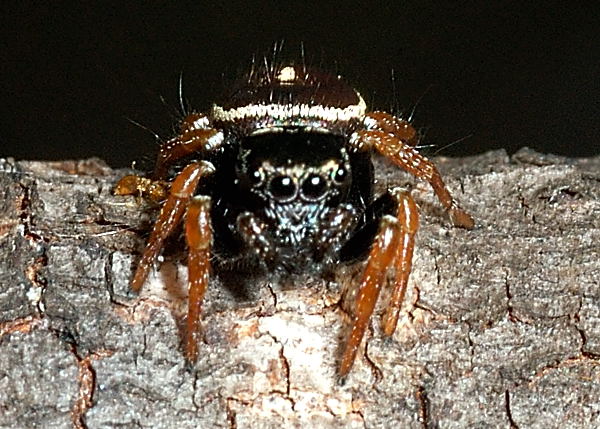
- Jumping Spider - the
model of Jumping Spider Mimicry
-
- We noticed one interesting behaviour of some planthoppers.
They mimic the
Jumping Spider.
-
Plant-hopper's face with Jumping Spider eyes pattern
- The Spider-face
Wattle Hoppers like to rest on stems of about 10mm diameter. When we came close,
they walked sideway and moved to the opposite side of the stem. This escape
strategy was quite effective on stems of 10mm diameter. The group of
planthoppers disappeared from our eyes in tenths of a seconds.
-
- When we came more closer, they walk forwards or backwards along the stem.
They seldom change their facing direction unless walking backwards and
blocked by something. They jumped and flied away when we touch them by
figures.
-
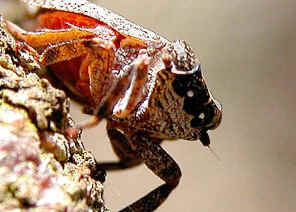
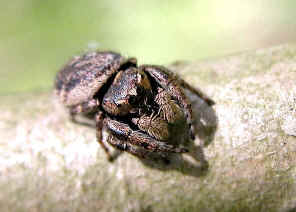
-
- With more observations, we found that sometimes we confused the
planthopper with the jumping
spider Zenodorus orbiculatus which can also be found on the same
host tree stems. Looked closer to the planthopper, we noticed the eyes
pattern on the planthopper's frons, which made us think it was a jumping
spider.
-
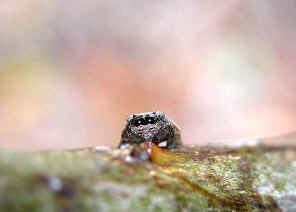
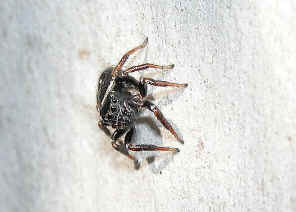
-
- The planthopper may not look like a jumping spider in the human point of
view. Imagine if you were an ant or a jumping spider walking along the 10mm
thick stem. When you met the planthopper, most likely you will see the
planthopper face to face. At this angle, the planthopper looks like a
jumping spider.
-
- This also explained why the planthopper only move sideway, forwards and
backwards but seldom turn around. For if it turns, the mimicking will fail.
-
- The jumping-spider-mimicking may help the planthopper to avoid some
predators, such as ants and even the jumping spiders. We did see the Zenodorus
orbiculatus prey on ant.
-
- Together with our observations on another
planthopper Platybrachys
vidua, its backwards movement and
eyes-pattern on wing tips to mimic larger animal. We speculate the
planthoppers adapted the backward movement first, and then eyes-pattern on
frons and on wing tips individually in evolution later.
-
- We have more discussions in our Mimicry
and Camouflage pages.
-
Hopper nymph's face with Jumping Spider eyes pattern
- In early summer Oct 2007, we found another planthopper that also has
the jumping spider face pattern.
-
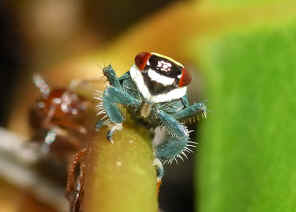
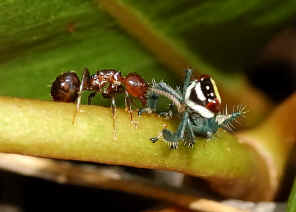 -
- When we first saw this planthopper face to face, we did think it was a
jumping spider. After the planthopper moved, we looked at it at the side
view, it nothing looked like a jumping spider.
-
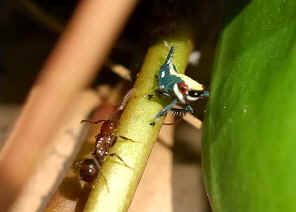
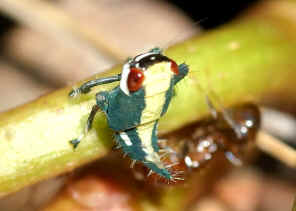 -
- This is a planthopper nymph in family Cicadellidae.
We did not find the adult yet and did not know it ID.
-
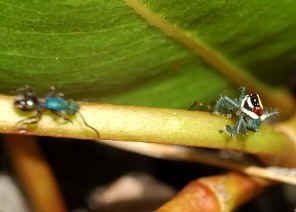
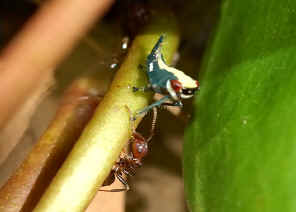 -
- Unlike the planthopper we mentioned above, never turn sideway to avoid
give away its identity, this planthopper nymph did turn around to any
direction when disturbed. But we notice that when this nymph rested, it
rested at the V-shaped gap formed by the stem and a leaf. So its back was
well protected and unseen.
-
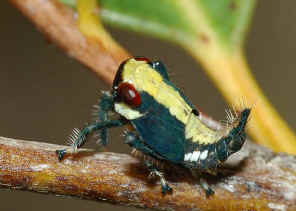 -
- We also notice that they were attended by at least two different small
ants species. This indicated that those small ants are not the targets of
the mimicry. Small ants' vision may not good enough to see their face
anyway. Possibly the good vision Jumping Spiders, the larger
ants and the vertebrate predators are the targets.
-
Ladybird's thorax with Jumping Spider eyes pattern
- Since some ladybird species
feed on aphids and most aphids
attract ants for protection. Ladybirds always confront with the ants.
-
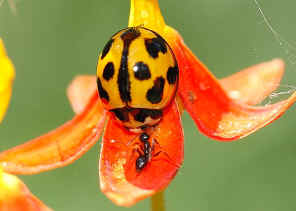
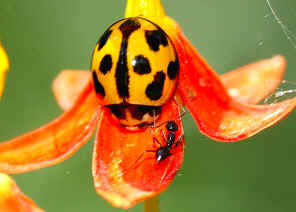 -
- We noticed that the "Jumping Spider eyes pattern" on ladybird
thorax is quite common. Those mimic patterns may help to scare away the
ants.
-
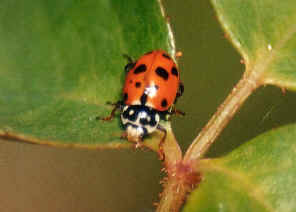
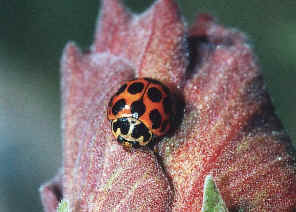 -
- Most of those mimic patterns on ladybird thorax are not as good mimic as
those hoppers discussed above. At least we had never mistaken a ladybird as
a jumping spider.
-
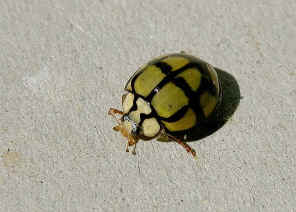
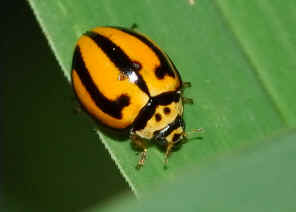 -
- We also notice two points;
- 1. Most of those ladybird species with the eye patterns are aphid-feeding
species, i.e., higher chance confront with ants.
- 2. When those ladybirds first emerge from pupa, before their skin dry and
harden, they are pale in colour. It is the patterns on throax appear first.
This may help them to avoid the ants in that weak situation.
[ Up ] [ Warnings ] [ Ants Mimicry ] [ Wasps Mimicry ] [ Black Wasps Mimicry ] [ Bees Mimicry ] [ Lycid Mimicry ] [ Jumping Spider Mimicry ] [ Self Mimicry ] [ Bird-dropping Mimicking ] [ Behaviour Mimicry ] [ Threaten Sign ] [ Mimicry in Butterfly ] [ Camouflage Master ] [ Eyes Pattern ]
| |
|


















